Medford City Hall
Introduction
Text-to-speech Audio
Images
Medford City Hall (image from Wicked Local)
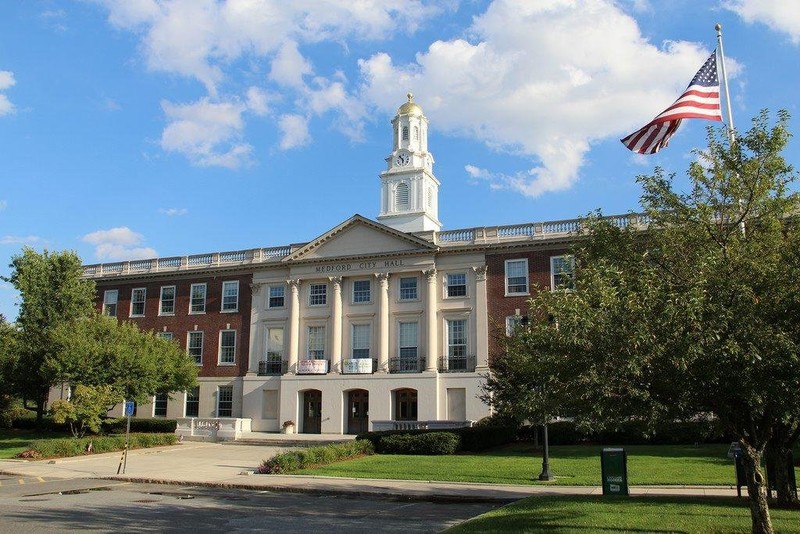
Central staircase (image from Medford Arts Council)
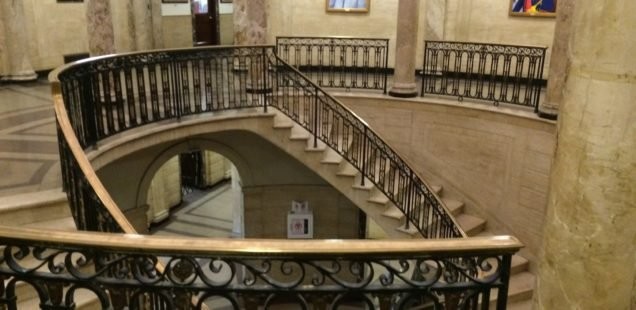
"Dedication of the New City Hall" exterior
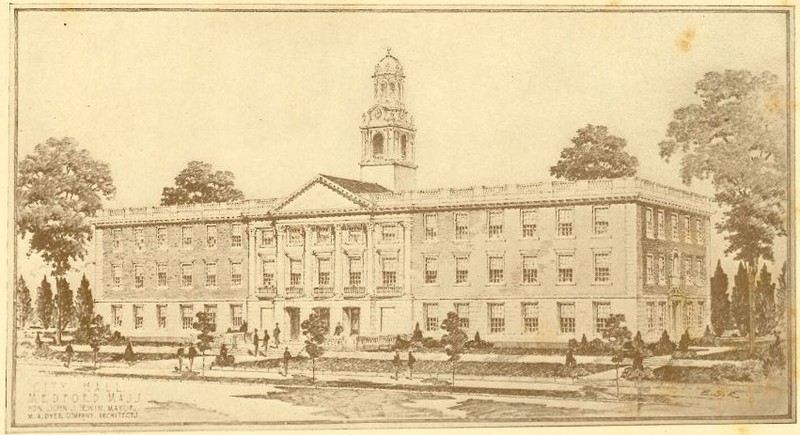
"Dedication of the New City Hall" entrance
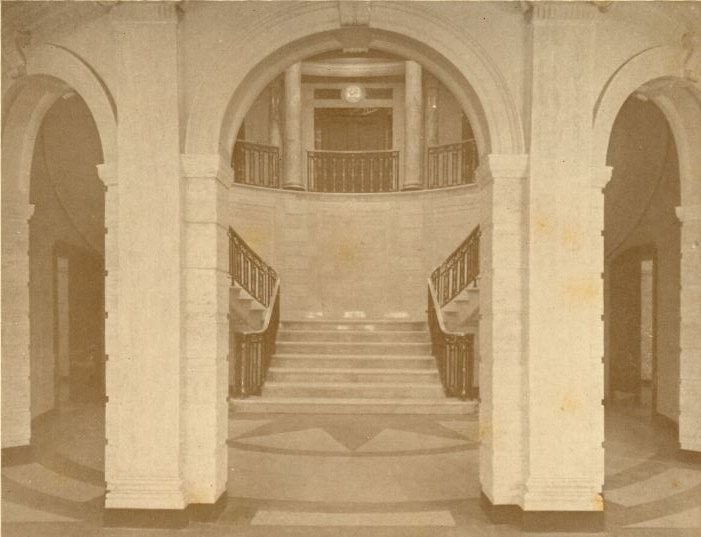
Medford's first city hall, 1861, with Lawrence Light Guard (from "Dedication of the New City Hall")
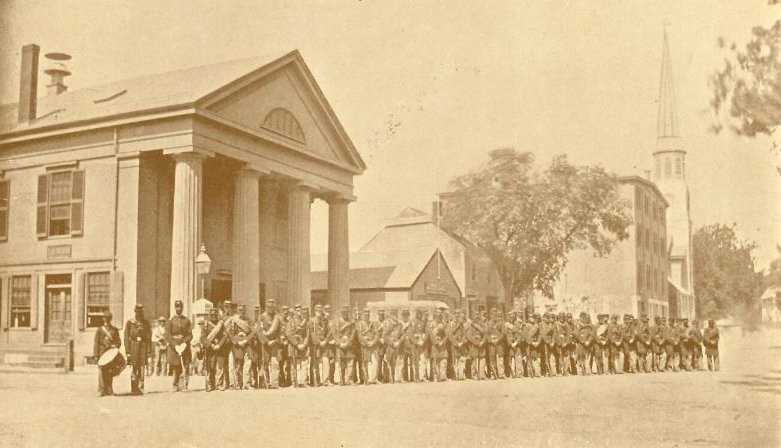
Backstory and Context
Text-to-speech Audio
The first town hall was not constructed until 200 years after Medford’s settlement, during the 1830s. The hall held town offices and two stores, as well as the Washington Hook and Ladder Company fire department. The stores were leased by a succession of businesses including a tailor’s shop, dry goods store, grocery, bookshop, and a circulating library. After the suicide of one shopkeeper, the space was converted into the town’s police station and, later, the Selectmen’s room. As a wooden building, Medford’s first town hall suffered three fires, the first only a few years after its construction, in 1839. Repairs were made and an additional 13 feet of space incorporated into the reconstruction. Only the skeleton of the building survived an 1850 fire, but the town rebuilt the hall once again. Nine years later, an arsonist set fire to the town house; as with the 1839 fire, the town used the reconstruction process to expand and improve the building. During the Civil War, the Union recruited soldiers for the Lawrence Light Guard in the town hall, and the townswomen used the upstairs meeting room as a headquarters for making and packaging bandages, clothing, and other necessities for the soldiers [1].
Medford grew quickly after the war ended, and was officially incorporated as a city in 1892. Its first mayor, Samuel Crocker Lawrence, took office the following year. The town hall was reconstructed as Medford’s first City Hall, with offices for the mayor, auditor, collector, clerk, and assessors. The police station and jail cells were at the rear of the building and in the basement until 1896, when separate police headquarters were constructed. The original City Hall was demolished in 1916 with the intent of constructing a new building on the same site. However, through financial and political complications, the new building was never constructed, and until 1937 the city government operated out of leased spaces in Medford Square, Colonial Hall, the Police Station, and parts of three different schools [1].
In 1935, Mayor John J. Irwin applied for and received a Federal grant toward the construction of a new City Hall on Medford Common. Medford-born Boston architect M. A. Dyer was chosen to design the building, which features a dome and rotunda, Corinthian columns, and marble floors [1]. Construction and landscaping of Medford’s City Hall were undertaken by the Public Works Administration and the Works Progress Administration, respectively [4]. The official dedication of the present City Hall took place on September 11, 1937 [1].
